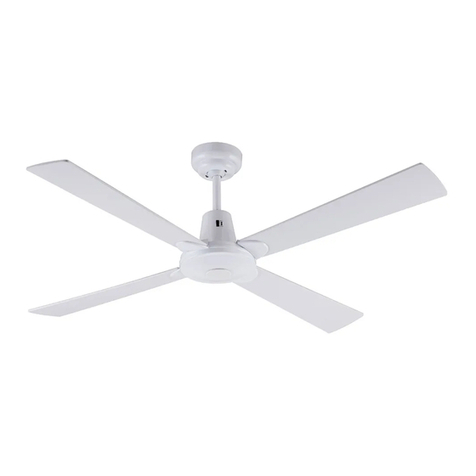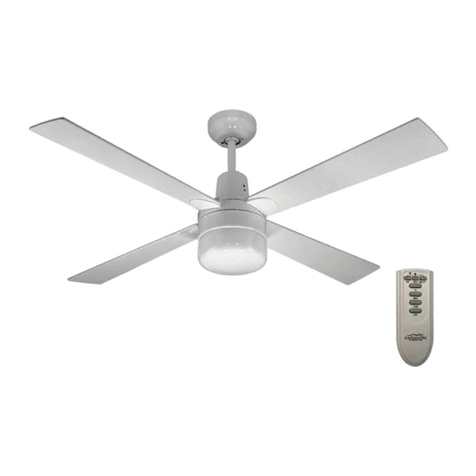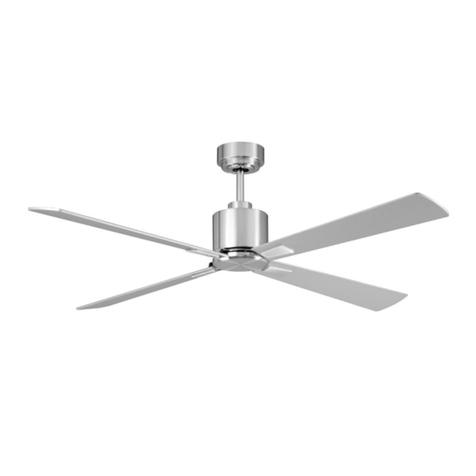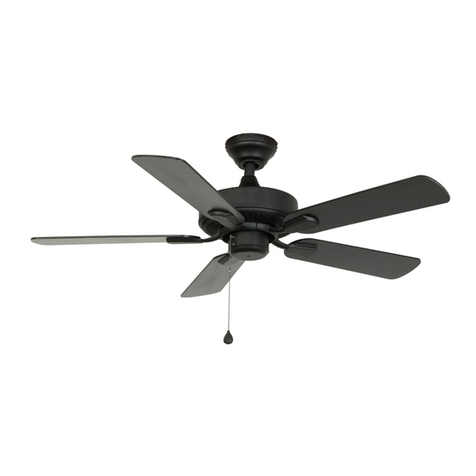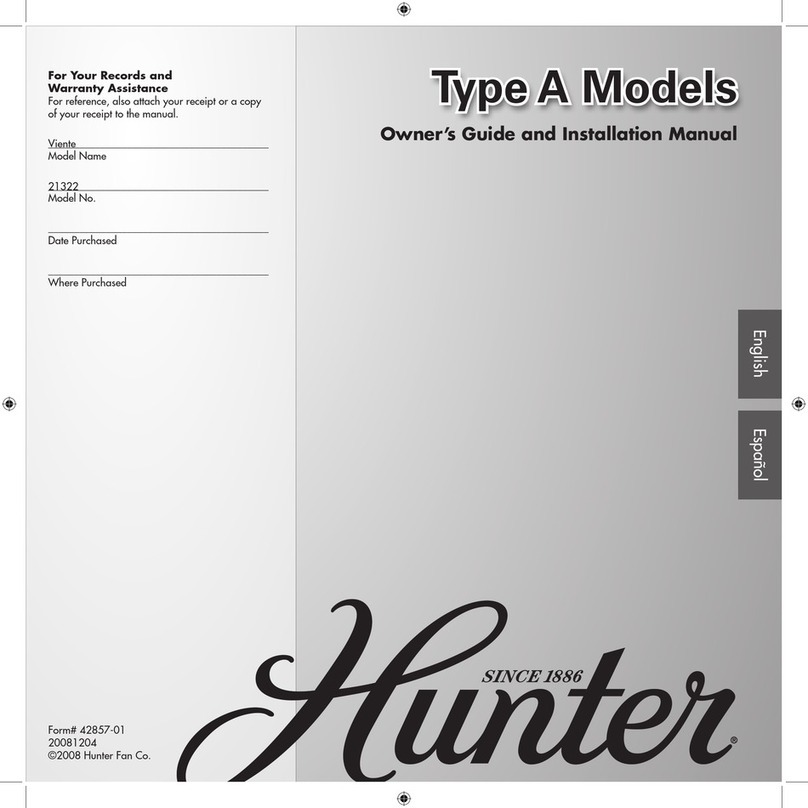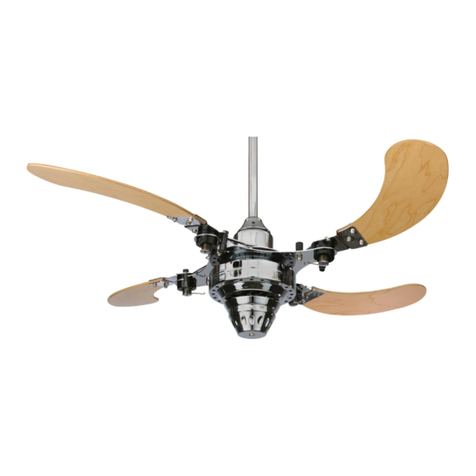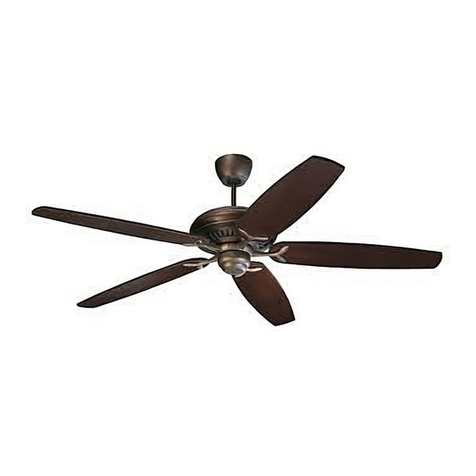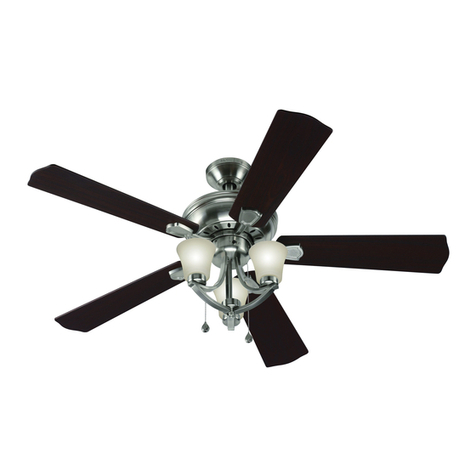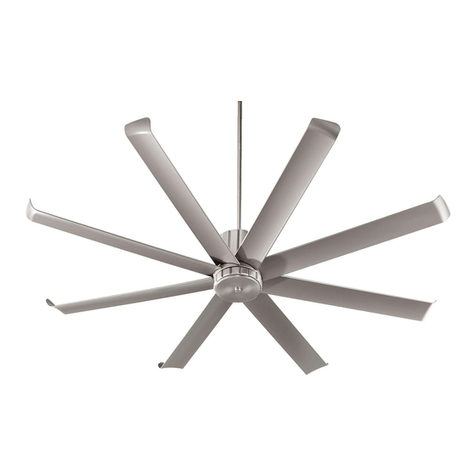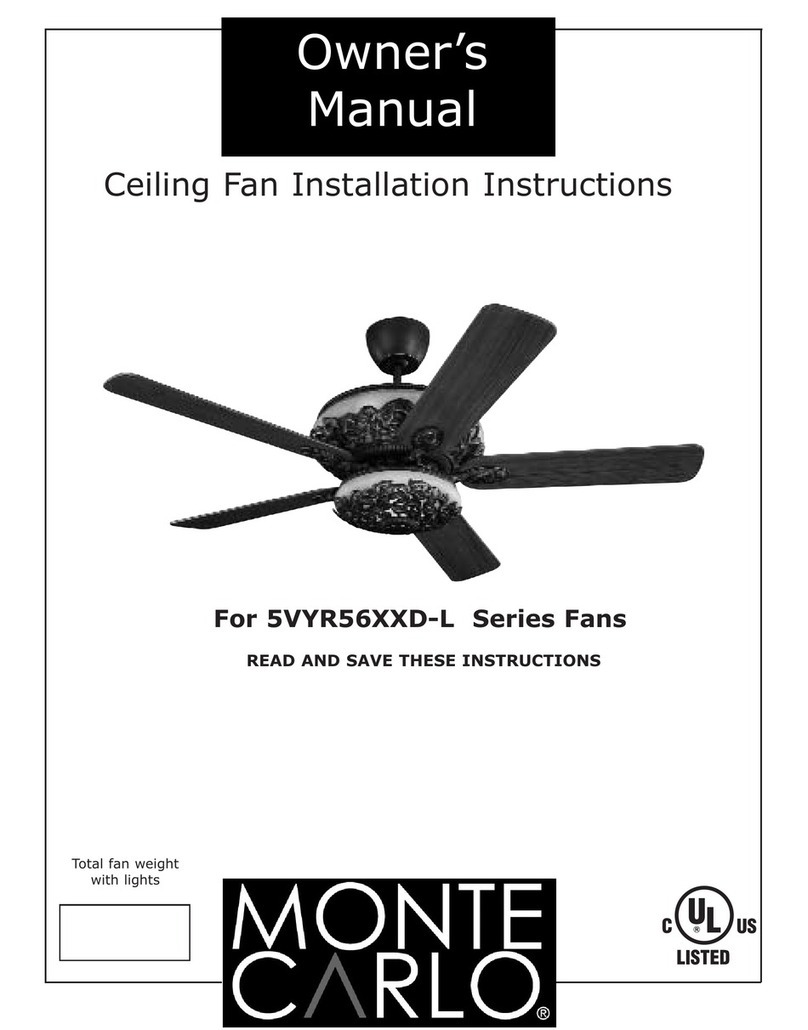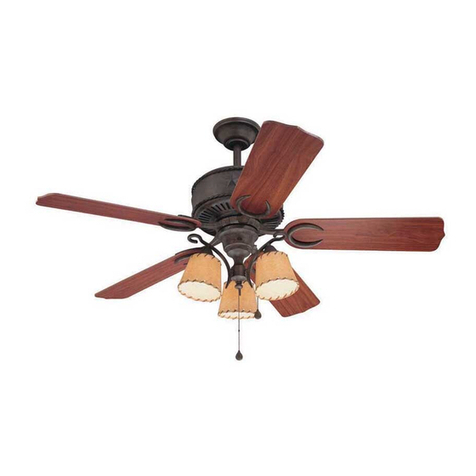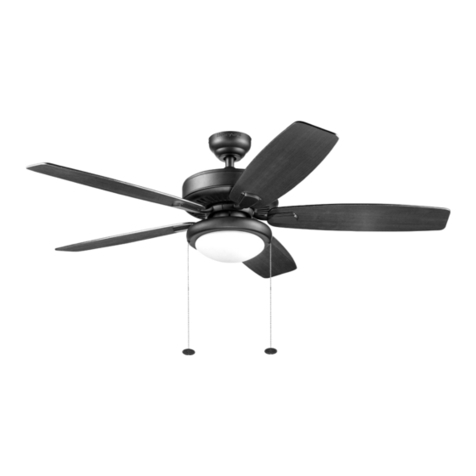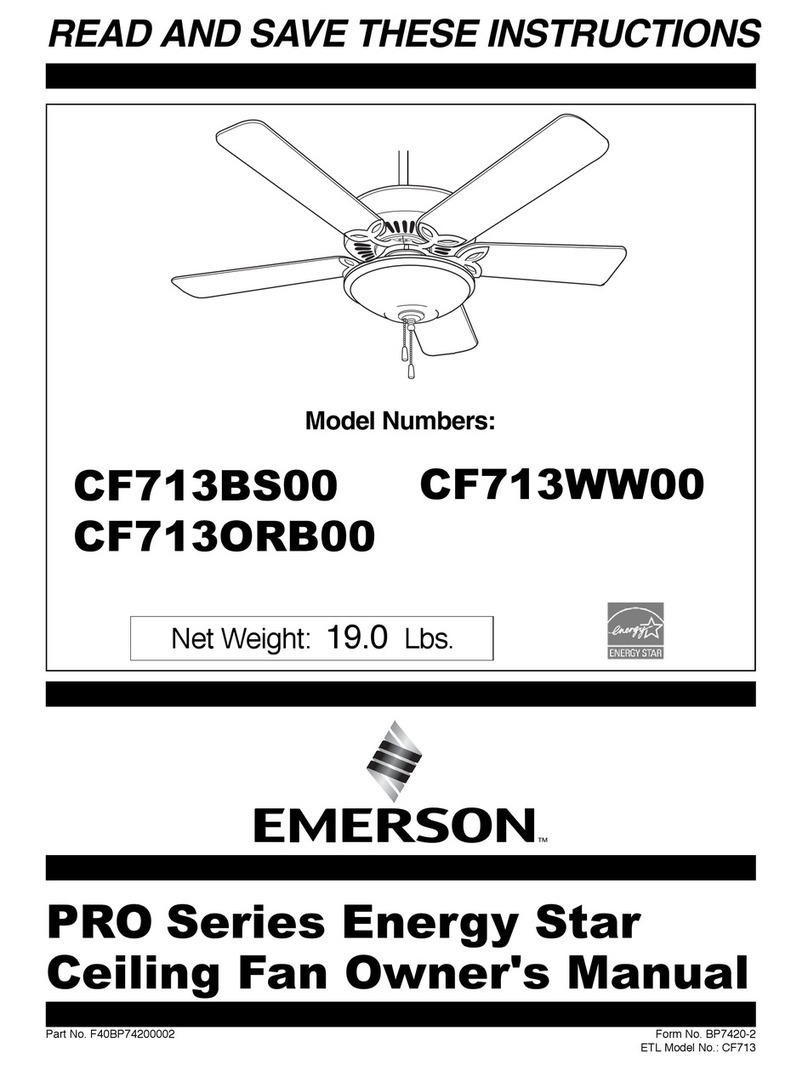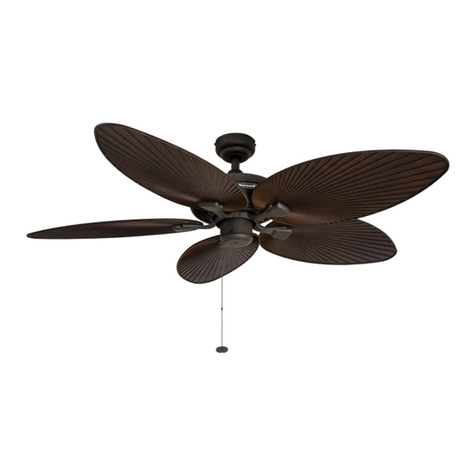
Model #17520-xx: 14.52 lbs
17525-xx: 16.50 lbs
1. Set of blades (a)
2. Hanging bracket (b)
3. Canopy (c)
4. Downrod assembly (3.5") and Alternate
downrod (6") (d)
5. Fan motor assembly (e)
6. Set of blade arms (f)
7. Control cup (g)
8. Parts bags (h) containing:
Blade attachment hardware
(Screws/washers, washers may be attached to
screws)
Mounting hardware (wire nuts, wood screws,
machine screws, lock washers, spring
washers, metal washers.)
9. Pull chain knobs (i)
10. Blade balancing kit (j)
Unpack your fan and check the contents. Do not discard the carton. If warranty
replacement or repair is ever necessary the fan should be returned in original packaging.
Remove all parts and hardware. Do not lay motor housing on its side - because the
decorative casing may shift. Check all visible screws, bolts and nuts for tightness.
Examine all parts. The following parts should be included:
2. UNPACKING YOUR FAN
NOTE:
Some Quorum fan models will have slightly
different parts than what is shown here
depending upon the design you have chosen.
Basic installation procedures are similar for
all models.
IF YOU FIND THAT PARTS ARE MISSING. CONTACT YOUR DEALER FOR REPLACEMENT, OR CALL QUORUM DIRECTLYAND WE WILL MAIL REPLACEMENTS TO YOU IMMEDIATELY.
a.
b.
c.
d.
e.
h.
f.
g.
j.
i.
1. To avoid possible electric shock, turn
off the electricity at the main fuse box or
circuit panel before you begin the fan
installation or before servicing the fan or
installing accessories.
2. Read all instructions and safety
information carefully before installing
your fan and save these instructions.
3. Make sure all electrical connections
comply with local codes or ordinances as
well as the National Electrical Code. If
you are unfamiliar with electric wiring,
please use a qualified and licensed
electrician.
4. Make sure you have a location
selected for your fan which allows clear
space for the blades to rotate, and at lease
seven (7) feet of clearance between the
floor and the fan blade tips.
5. The outlet box and ceiling support
joist used must be securely mounted, and
capable of supporting at least 50 pounds.
To reduce the risk of fire, electric shock,
or personal injury, use only an outlet box
clearly labeled "Acceptable For Fan
Support".
6. To reduce the risk of personal injury
use only approved hanging brackets and
screws supplied with the outlet box for
mounting to the outlet box.
7. After installation is complete, check
that all connections are absolutely secure.
8. Do not insert anything into the fan
blades while they are rotating.
9. Do not operate the reverse switch until
the fan has come to a complete stop.
10. Do not attempt to control the
operation of the fan (or an optional light
kit) from any wall control that is not
approved by Quorum for use with its fans.
Do not use solid state wall controls. The
use of any unapproved control voids the
fan's warranty.
TOOLS REQUIRED
FOR INSTALLAITON
Phillips Screwdriver
Wire Cutters
Electrical Tape
Step Ladder
1. SAFETY RULES
